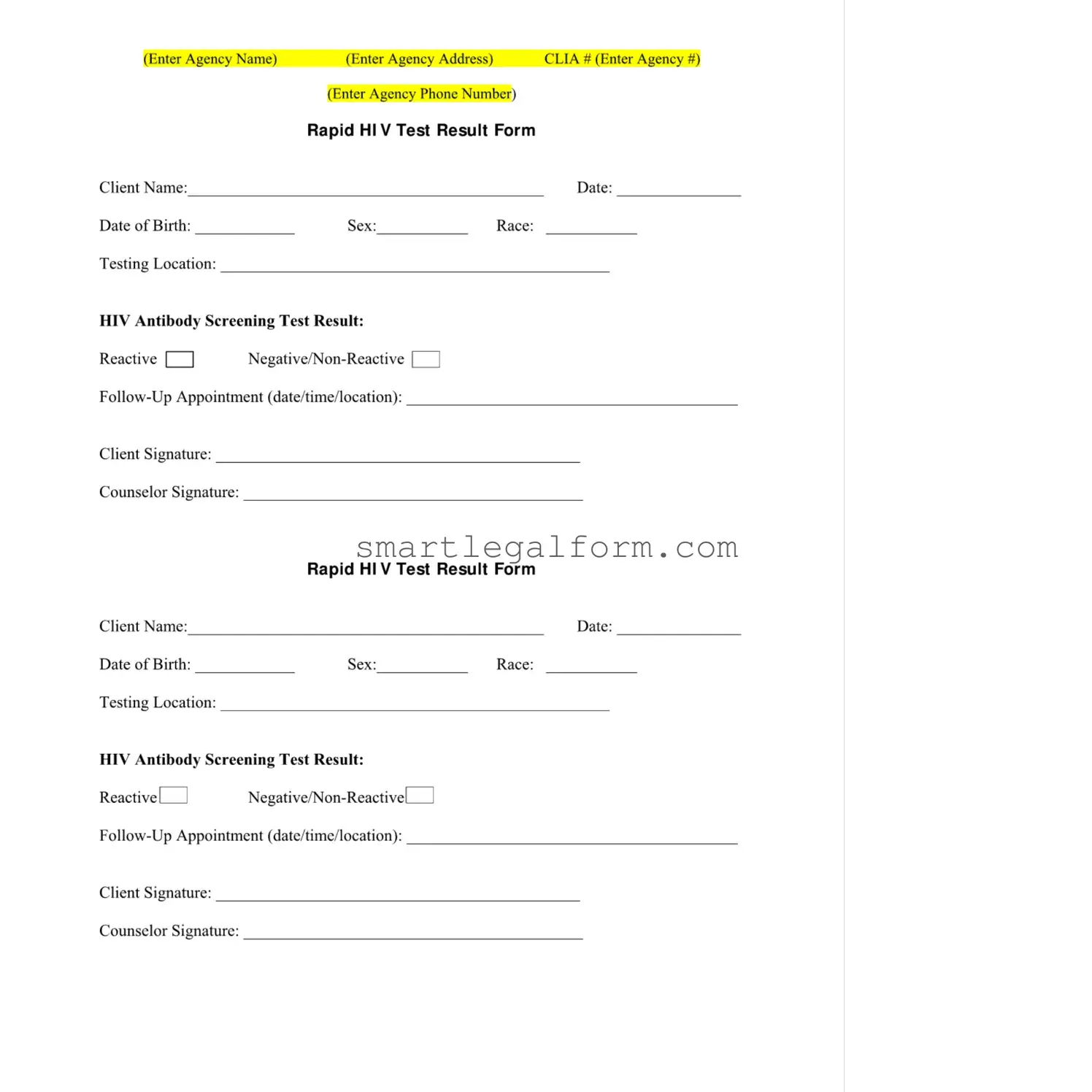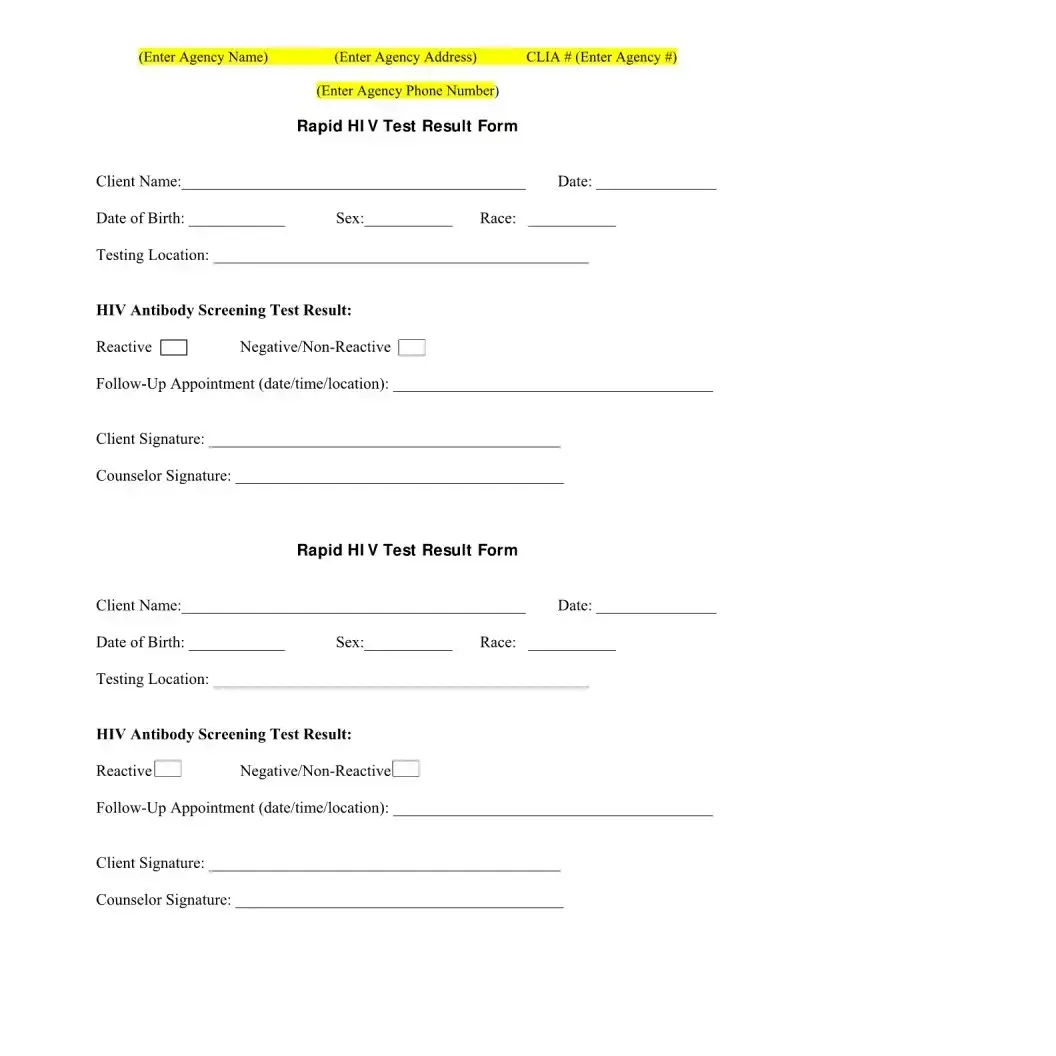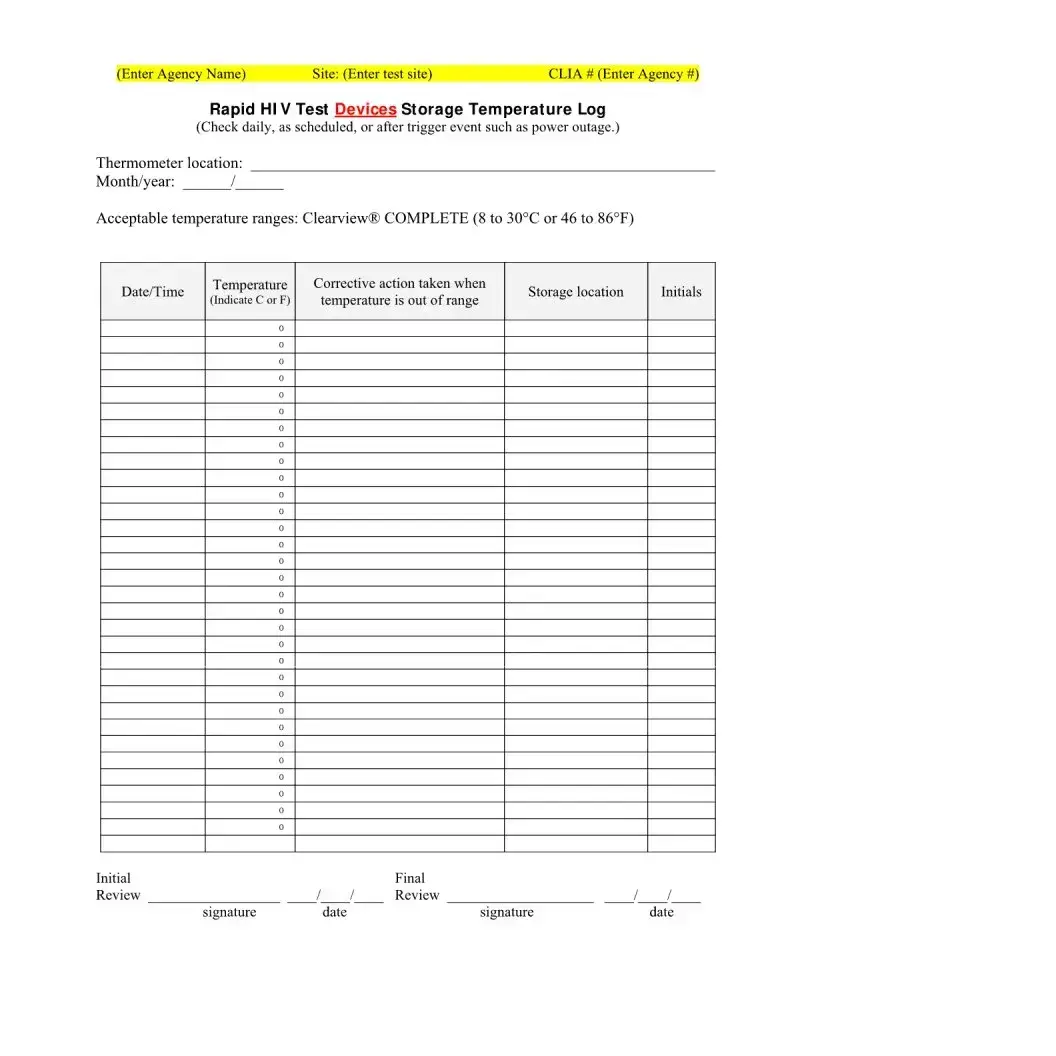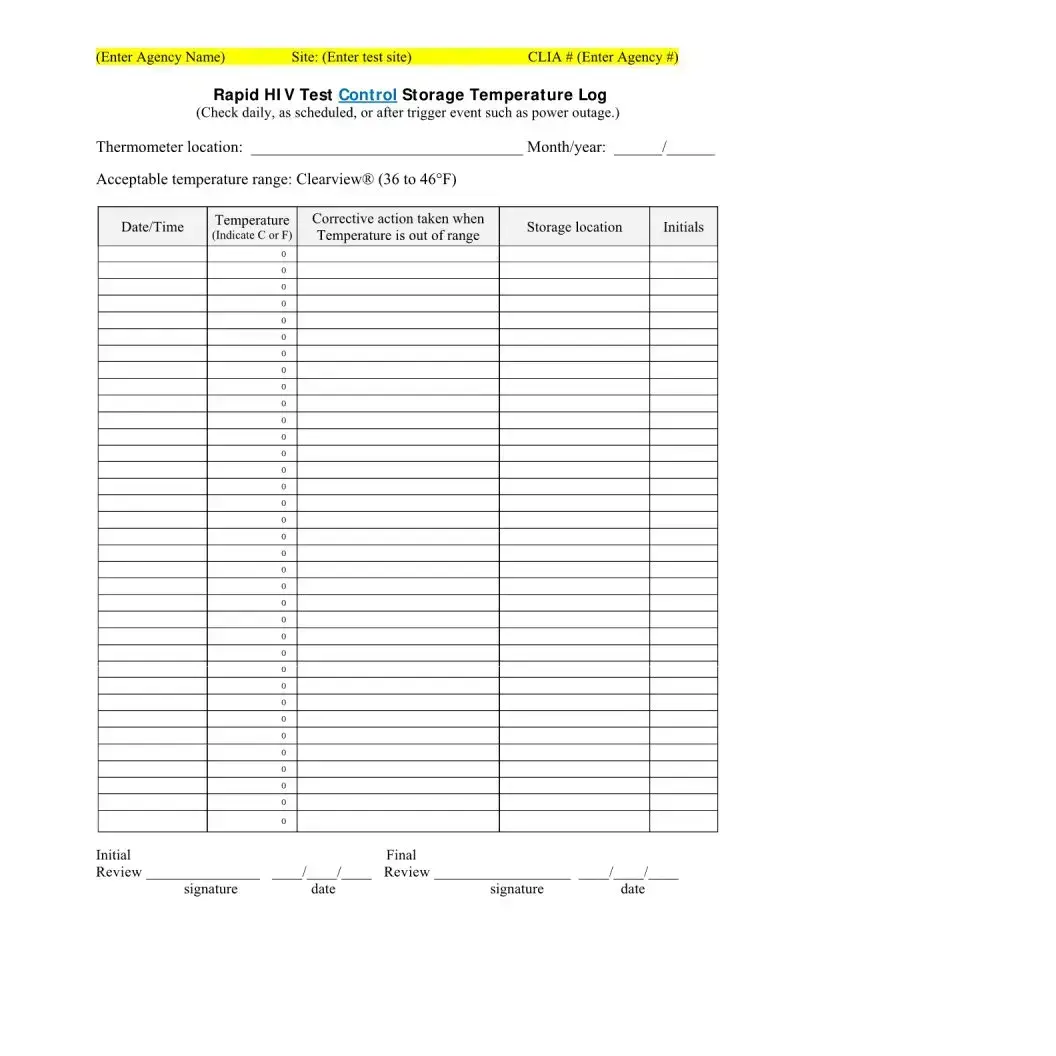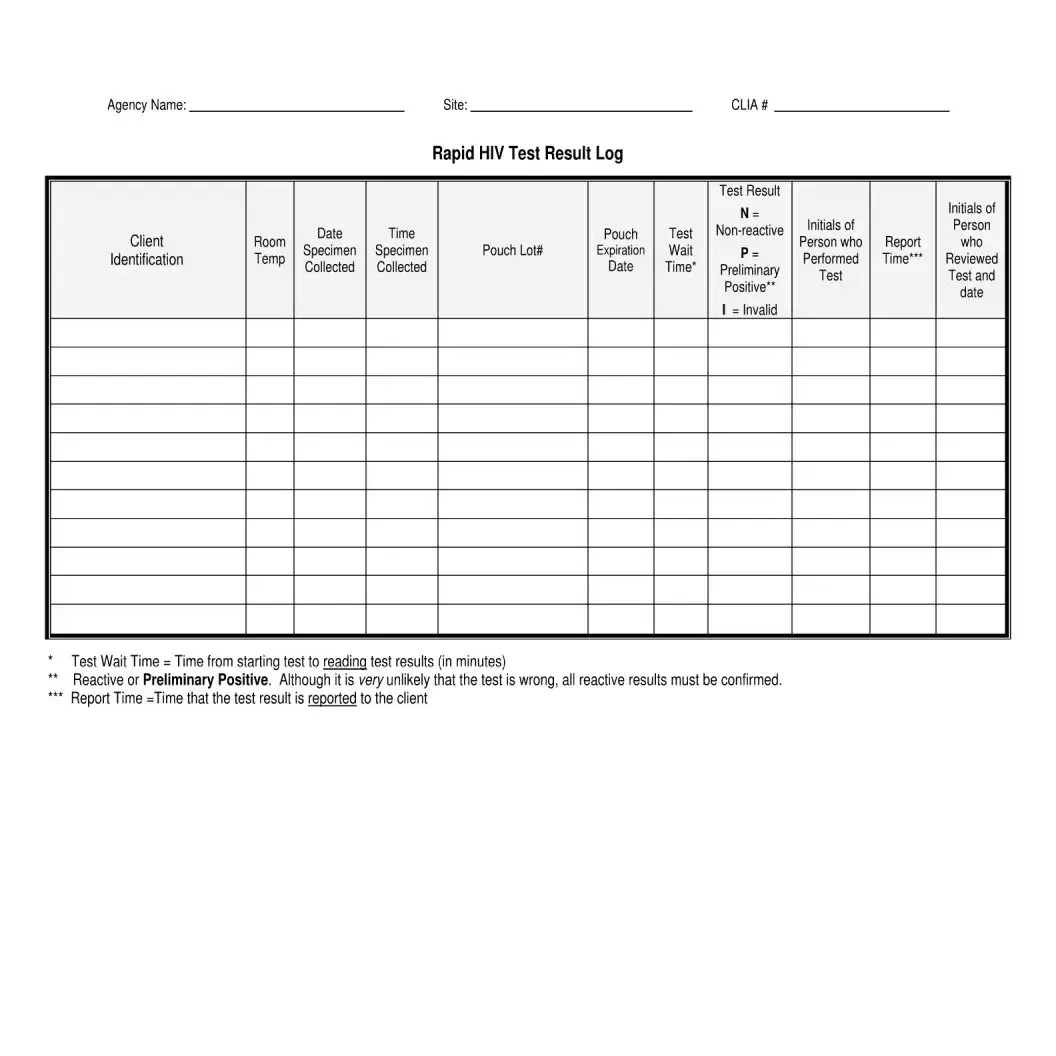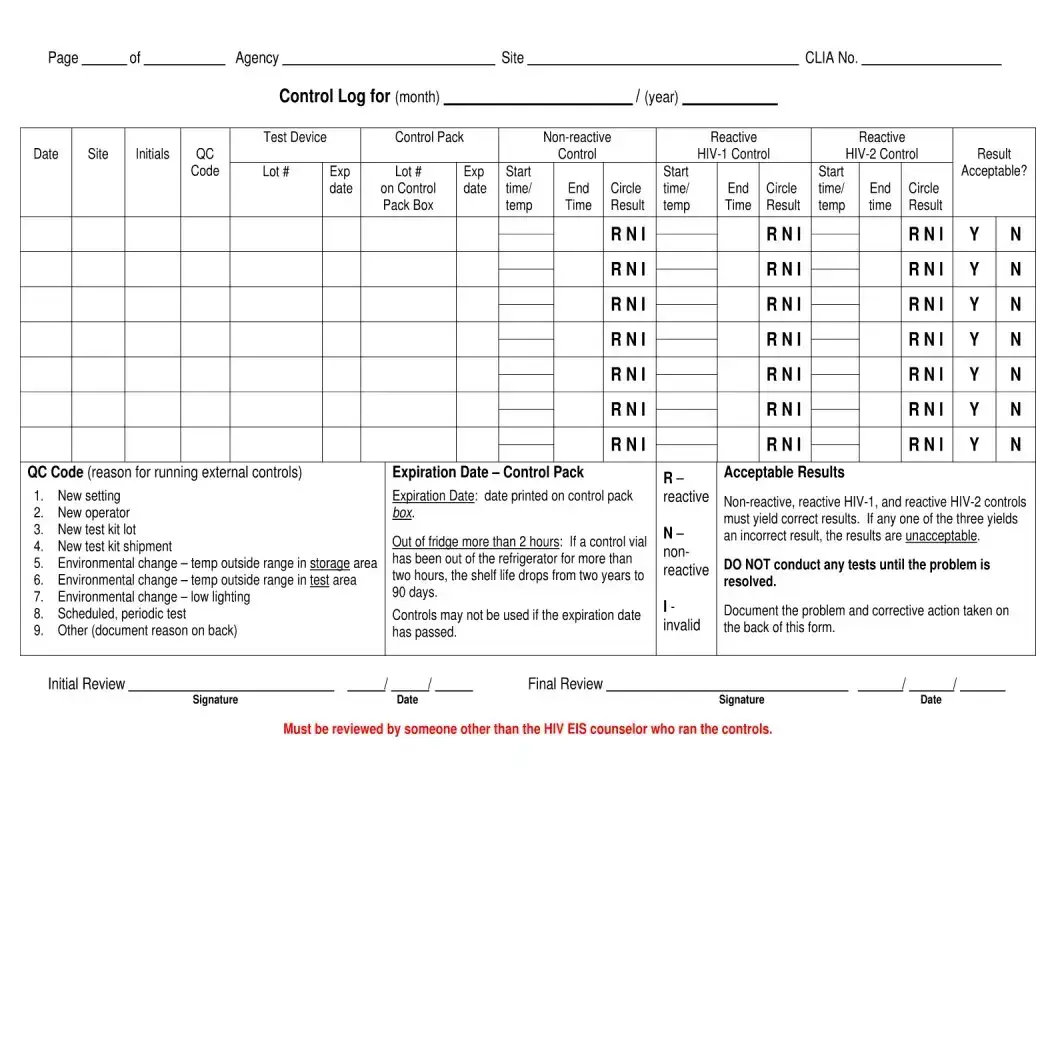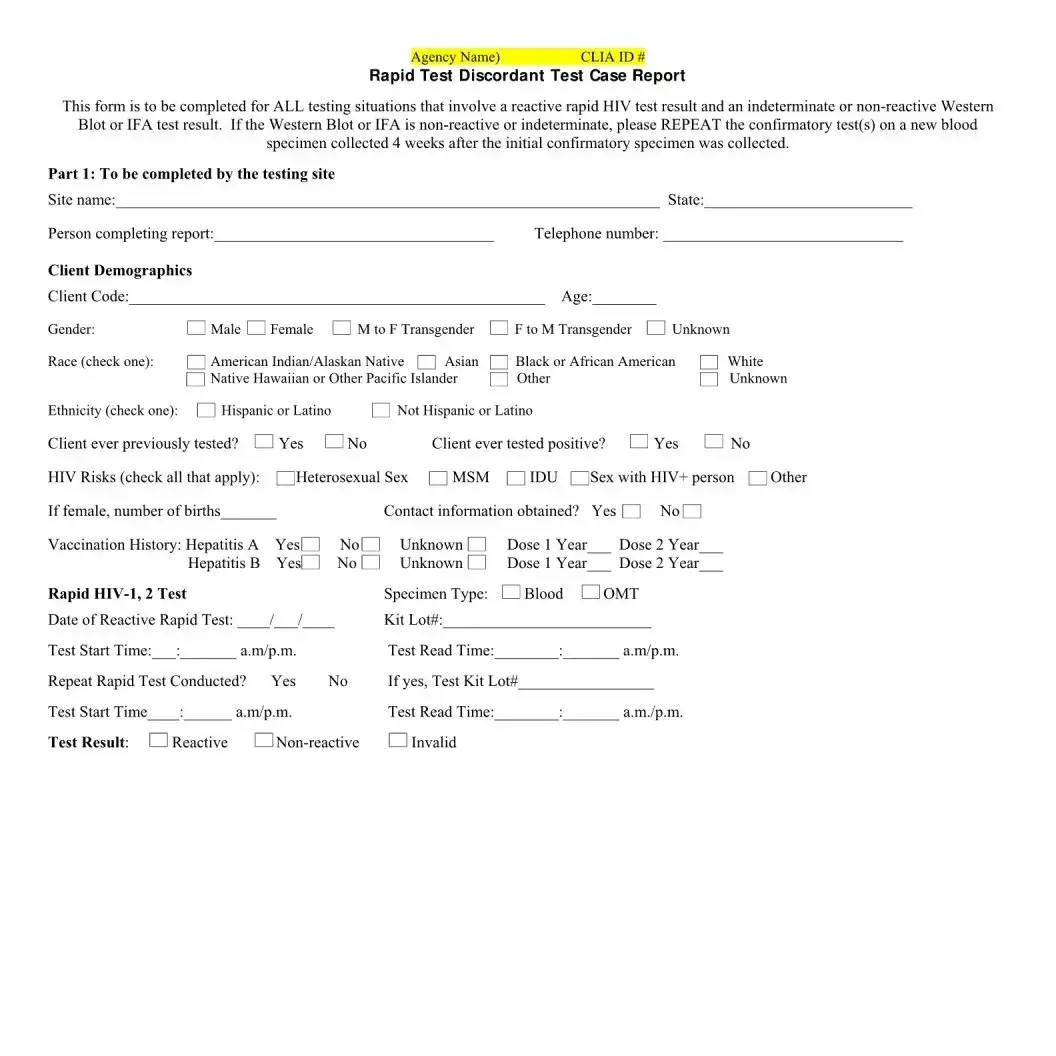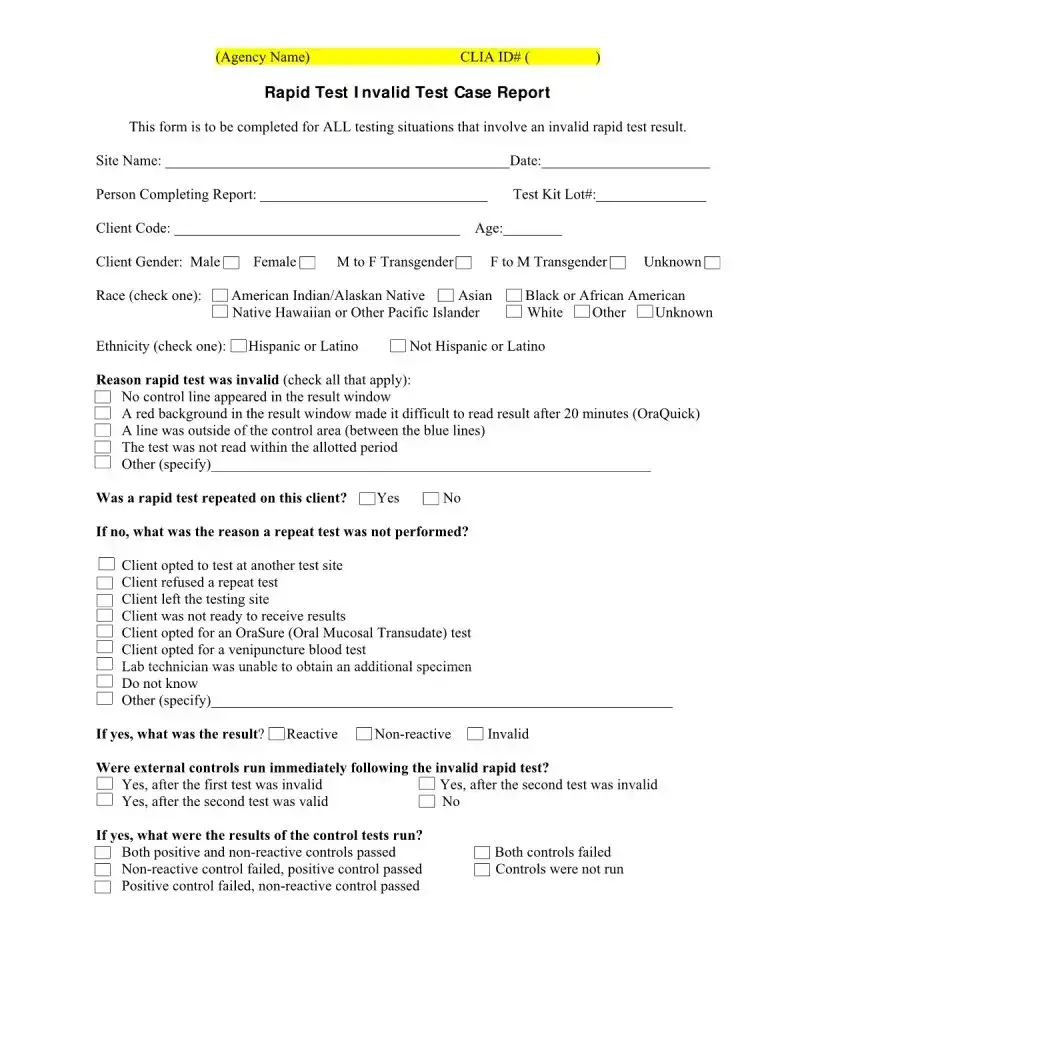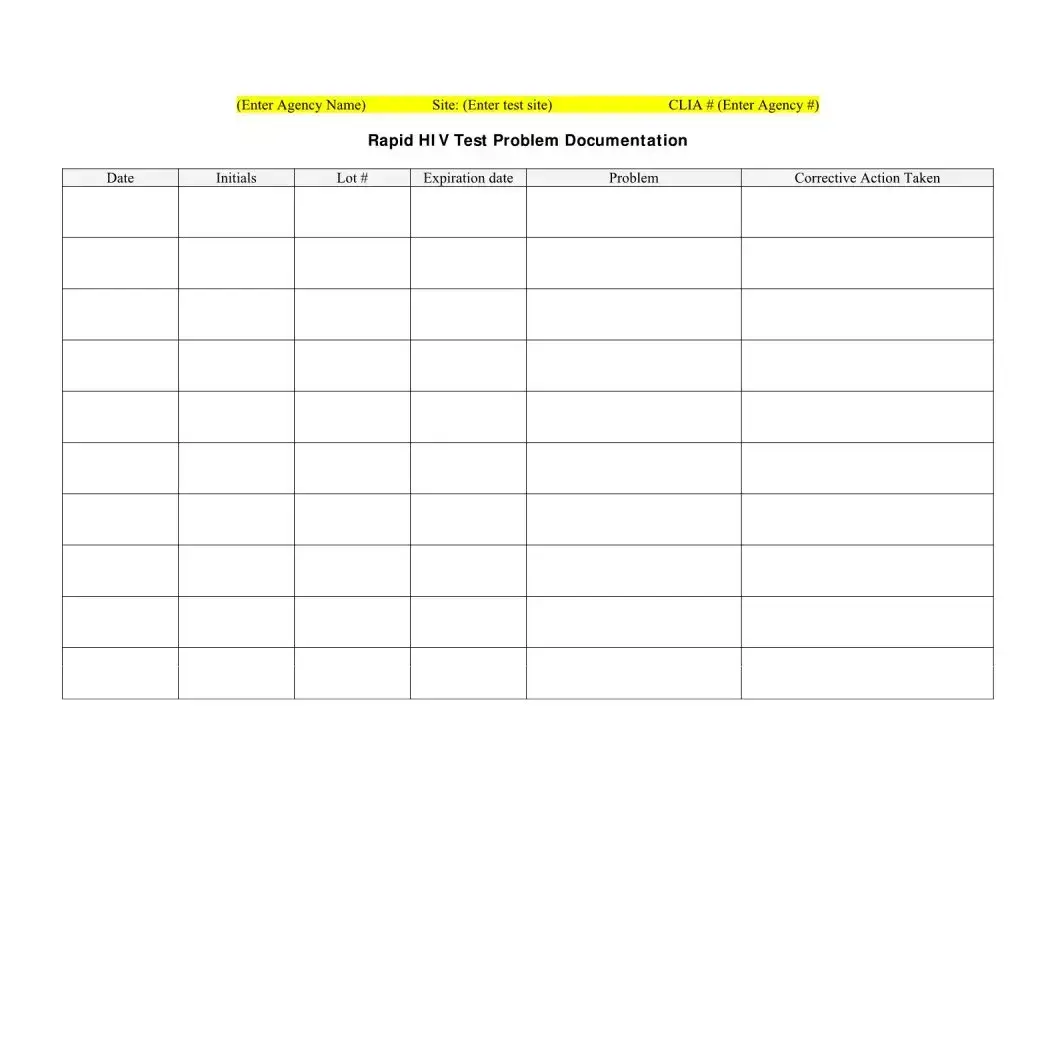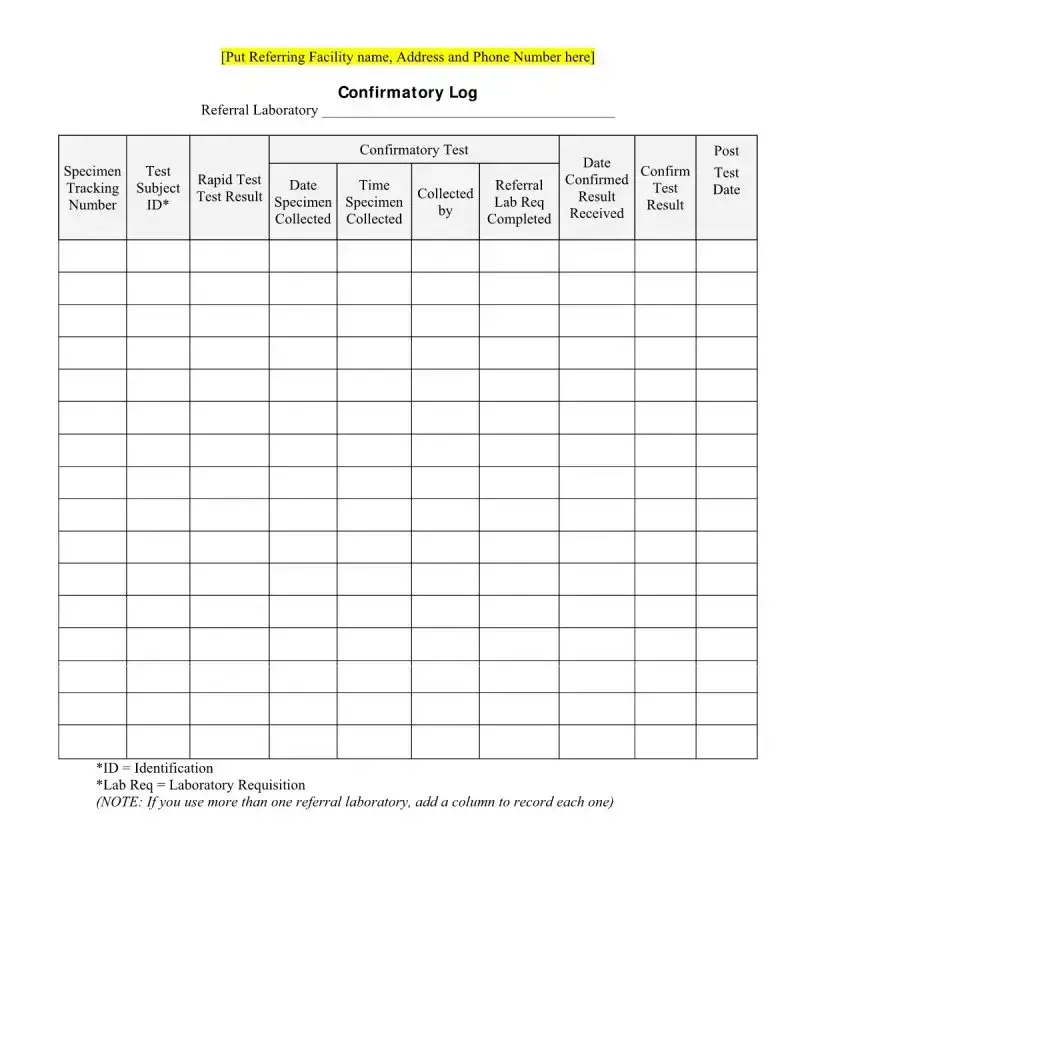Free Negative Hiv Test Form
The Negative HIV Test form is a document used to record the results of an HIV antibody screening test. It includes essential client information, test results, and details regarding follow-up appointments. Completing this form accurately is crucial for both the client and the testing agency.
To fill out the form, please click the button below.
Fill Out Your Form Online
